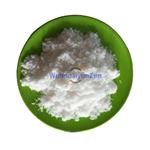Etamsylate: Antihemorrhagic Activity, Heparin Antagonism & Veterinary Application
Etamsylate is a synthetic antihemorrhagic (hemostatic)agent primarily used to reduce bleeding by enhancing the initial phase of hemostasis, specifically by promoting endothelial-platelet interactions Unlike many hemostatics, etamsylate does not cause vasoconstriction, nor does it affect the coagulation cascade or fibrinolysis.

Haemostatic agent etamsylate in vitro and in vivo antagonizes anti-coagulant activity
Etamsylate is a haemostatic agent indicated for gynecological hemorrhages and surgical interventions in humans as well as for veterinary surgery, obstetrics and accidental bleeding in animals. Extensive clinical evidence obtained in the last fifty years supports the anti-hemorrhagic activity of this material. However, more recent meta-analyses revealed that, despite a lack of significant effects on mortality and functional impairment, etamsylate displays consistent reduction in ventricular hemorrhage in premature infants. In addition, recent preclinical data showed that treatment with etamsylate decreased hemorrhage area and lesion area after spinal cord transection in rats, as well as reduced lesion and tissue necrosis in spinal cord contusion, enhancing neuronal survival and facilitating functional recovery. Heparins are widely used for anticoagulant management of patients with thromboembolic events and are the agent of choice for acute inpatient and outpatient management of major vessel thrombotic disease. However, heparins can cause hemorrhagic complications requiring heparin antagonism, a fact that justifies the search for drugs antagonizing heparin activity. The demonstrated ability of etamsylate to inhibit the binding of heparin to heparin-binding domain in growth factors could potentially give this molecule the capacity to interfere on interaction between heparin and its target coagulation factors.[1]
The lack of inhibition of heparin-induced vasodilation by etamsylate while this drug specifically interfered with hemorrhagic effects of heparin would be in agreement with evidence demonstrating that vasodilation and anti-coagulant activities of heparin are determined by different chemical functions of the molecule. In this sense, it has been reported that carboxyl groups are responsible for vasodilatory effects while sulfonate groups are responsible for anti-coagulant effects. In the same way, sulfate groups in heparan sulfates are essential for anticoagulation activity by binding to antithrombin.Etamsylate antagonizes pro-hemorrhagic effects of heparin in vitro and in vivo without inhibiting its vasodilatory properties, which were rather enhanced by etamsylate. These evidences, in addition to propose a pharmacological interaction between heparin and etamsylate, could help to explain pharmacological effects of it and suggest that this drug could have a role for reversing pro-hemorrhagic states, especially those related to heparin therapy or to endogenous heparin-like involvement/upregulation. Furthermore, a higher efficacy of topical administration of etamsylate is also suggested.
Evaluation of the effect of etamsylate on thromboelastographic traces of canine blood
Etamsylate has been used clinically in dogs, cats, horses, cattle, and humans with bleeding disorders, although the number of clinical publications in veterinary medicine is limited, with only one publication. The only veterinary publication available of the clinical use of etamsylate described a reduction in hemolactia in lactating dairy cows when it was administered at 15 mg/kg daily for three consecutive days.Most of the human literature has focused on severe menstrual bleeding, surgical bleeding and periventricular bleeding in preterm infants. A systematic review that evaluated seven trials enrolling 1410 preterm infants found that, although infants treated with etamsylate had significantly less intraventricular haemorrhage than controls at <31 weeks and <35 weeks of gestation, there was no significant difference detected in neonatal mortality or neurodevelopmental outcome. Another systematic review that evaluated 1770 women with heavy menstrual bleeding did not find a reliable decrease in menstrual blood loss when etamsylate was used.[2]
Although there are no studies comparing the effect of etamsylate versus protamine or heparinase to revert the anticoagulant effect of heparin, protamine and heparinase are probably more effective for this purpose. In the present study, it was able only to significantly change the variables MA and alfa angle compared to the control group, while R time was not significantly different. Both protamine and heparinase almost completely reversed the TEG variables R time, K and alfa angle in an in-vitro study of human blood treated with heparin 0.2 U/mL. Based on these results, further studies comparing the effects of these three drugs to reverse the anticoagulant action of heparin are warranted. Etamsylate might be a promising drug to reverse heparin action due to its more favourable safety profile. Protamine has several significant side effects, such as hypotension, inhibition of platelet aggregation, enhanced fibrinolysis and anaphylaxis. Etamsylate might be used as an alternative to protamine to reverse the anticoagulant effect of heparin if the patient develops significant side effects from protamine or if protamine cannot be sourced.
References
[1]Cobo-Nuñez, M Yolanda et al. “Haemostatic agent etamsylate in vitro and in vivo antagonizes anti-coagulant activity of heparin.” European journal of pharmacology vol. 827 (2018): 167-172. doi:10.1016/j.ejphar.2018.03.028
[2]Herrería-Bustillo V, Masiá-Castillo M, Phillips HRP, Gil-Vicente L. Evaluation of the effect of etamsylate on thromboelastographic traces of canine blood with and without the addition of heparin. Vet Q. 2023 Dec;43(1):1-6. doi: 10.1080/01652176.2023.2260449. Epub 2023 Sep 16. PMID: 37715947; PMCID: PMC10548841.
See also
Lastest Price from Etamsylate manufacturers

US $10.00/KG2025-06-27
- CAS:
- 2624-44-4
- Min. Order:
- 1KG
- Purity:
- 99%
- Supply Ability:
- 10 mt

US $5.00-0.50/KG2025-06-13
- CAS:
- 2624-44-4
- Min. Order:
- 0.10000000149011612KG
- Purity:
- 99% hplc
- Supply Ability:
- 5000kg


